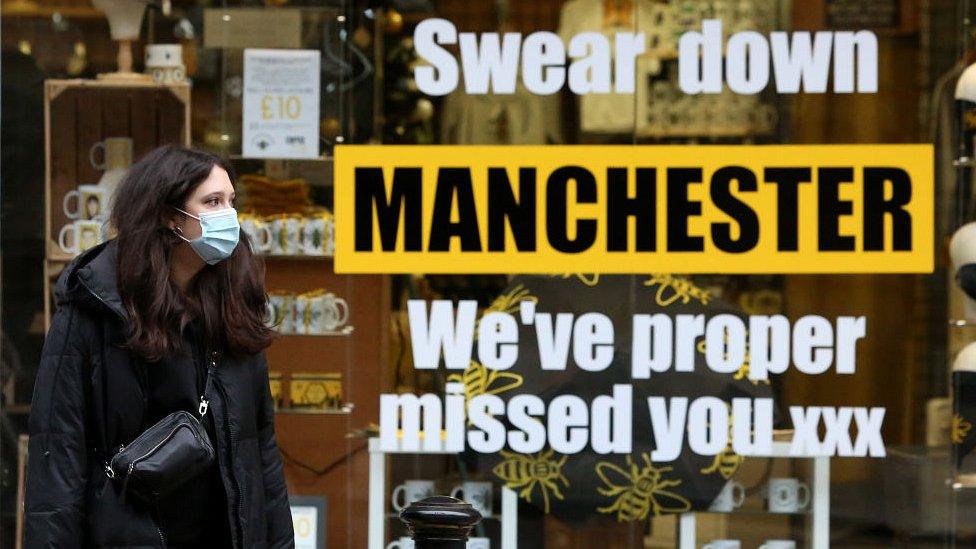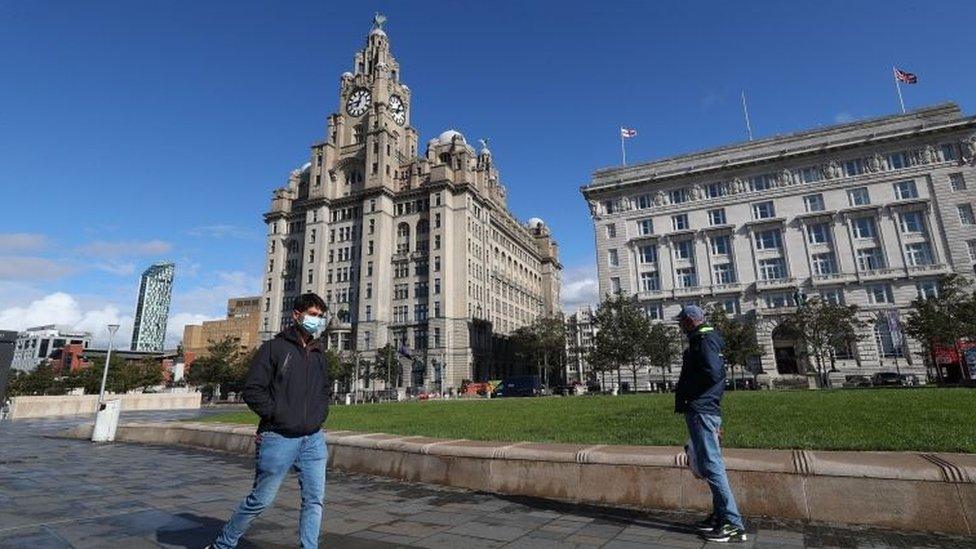Covid: Has England's lockdown worked?
- Published

When England went into a national lockdown on 5 November, it left behind a three-tiered system of restrictions designed to keep the virus under control.
Now the system is returning - although with stricter rules and more areas in the toughest, third tier. So has the lockdown worked - and why was it necessary in the first place?
Tiers 1.0
Between 14 October, when the tiers were introduced, and 5 November when they were replaced, cases continued to rise across the country. The weekly number rose in every region - by half in London, more than three-quarters in the East of England and, in the South East and the West Midlands, it more than doubled.
In the North West and North East, though, cases began to level off, rising by only 6% and 10% respectively.
It suggests the highest tier may have had some impact - the North West, where cases rose the least, was largely in tier three. But tier two had little effect in most of the country, while in many tier-one areas - particularly in the South East - cases rose quickly.
The government's independent advisers, the Scientific Advisory Group for Emergencies (Sage) concluded: "Tier-one measures alone are not enough to prevent the epidemic from growing rapidly."
It estimated cases could shrink by a "modest" 10% when moving from tier one to tier two.
And even for tier three - as it stood before 5 November (less stringent than it will be from 2 December) - it was "unclear" whether those restrictions alone would be enough to cause the epidemic to shrink "at a regional or national level".
Case numbers did fall in some areas under the tier system, at a more local level. For example, in Manchester and Liverpool they fell by about a third and a half respectively. Labour and Conservative MPs have criticised the government for not factoring in the differences in rates within regions when assigning tiers - putting the whole of the North East into tier three, for example.

Liverpool was in tier three before the national lockdown began but will now be in tier two
Lockdown
This picture of generally rising cases sets the scene for why the government might have felt a second lockdown was necessary. Beyond the over-arching aim of ensuring that numbers falling ill are as low as possible, case numbers need to be reasonably low for the test-and-trace system to have a shot at controlling the epidemic.
According to Sage: "Test and trace, including mass testing, is most effective when prevalence is low. Even the most effective test-and-trace system will have little impact when caseloads are high."
And the lockdown does appear to have turned the tide in most of the country. Cases fell by about a third in the North East and South West, and about a half in the North West and in Yorkshire and the Humber.
But case numbers take much longer to fall than they do to rise. One estimate suggested for every day of cases increasing, it could take five days for them to come back down again.
You can see this in the figures. Whereas some areas' cases more than doubled while the tier system was in place, the most dramatic falls under lockdown were only half that rate over the same period.
In London, the South East and in the East of England, cases remained virtually static - rising at first immediately after lockdown, perhaps because of pre-lockdown socialising, before starting to decline slightly.
But the government has judged that there are now enough cases to return the country to restrictions that, while slightly looser than in the lockdown, are tougher within each tier than they were before it.
Fears of what a lockdown in the run-up to Christmas might do to already-struggling shops and restaurants are likely to have been in the prime minister's mind.
Tiers 2.0
Health Secretary Matt Hancock has said the new tiers have been based on factors that include numbers of positive tests and the pressures on the NHS.
Health Secretary Matt Hancock sets out England's new coronavirus tier system
The government is also looking at the numbers involving people aged over 60 and the rate at which cases are rising or falling.
But if you plot every local area on a graph, it's clear the the overall number of cases per 100,000 people is the main deciding factor.
The regions with the highest number of cases are generally in tier three, those in the middle in tier two and those with the lowest number of cases are in tier one.
That's why, for example, the North East is in tier three and London in tier two, even though the region has had a much bigger fall in cases, comparatively, than the capital. The North East still has almost twice the number of cases that London has.
It is thought that there won't be much movement between tiers before Christmas.
Follow Rachel on Twitter, external